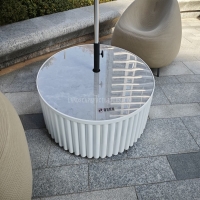Welcome to the website for landscape facilities products and knowledge.
What are the design features that make the table suitable for use in healthcare or senior living facilities?
Tables used in healthcare and senior living environments require specialized design features that prioritize hygiene, safety, and durability. The foremost consideration is infection control, achieved through non-porous surfaces like high-pressure laminate or antimicrobial plastics that resist moisture and are easy to clean with harsh disinfectants. Durability is critical, with designs featuring robust materials such as solid phenolic resin or reinforced steel that withstand daily impact and heavy use without cracking or chipping.
Safety and ergonomics form another crucial pillar. Tables must have rounded, soft-edged corners to prevent injuries, and height-adjustability mechanisms to accommodate both seated residents and standing healthcare staff. Stability is non-negotiable; a low center of gravity and sturdy legs prevent tipping, which is vital for patient transfer and support. Furthermore, considerations for mobility are key, with options for locking casters on mobile units and designs that allow easy access for wheelchairs, ensuring the table can be brought to the patient.
Finally, the human element is addressed through patient comfort and accessibility. Surfaces should be warm to the touch, and designs should avoid clinical, intimidating aesthetics. Incorporating elements like built-in storage for personal items or subtle color variations can significantly enhance the well-being of seniors and patients, making the furniture not just functional but also supportive of a positive care environment.
Related search:

Recommendation
Round metal tube border design table with tempered glass or granite countertop on the top.